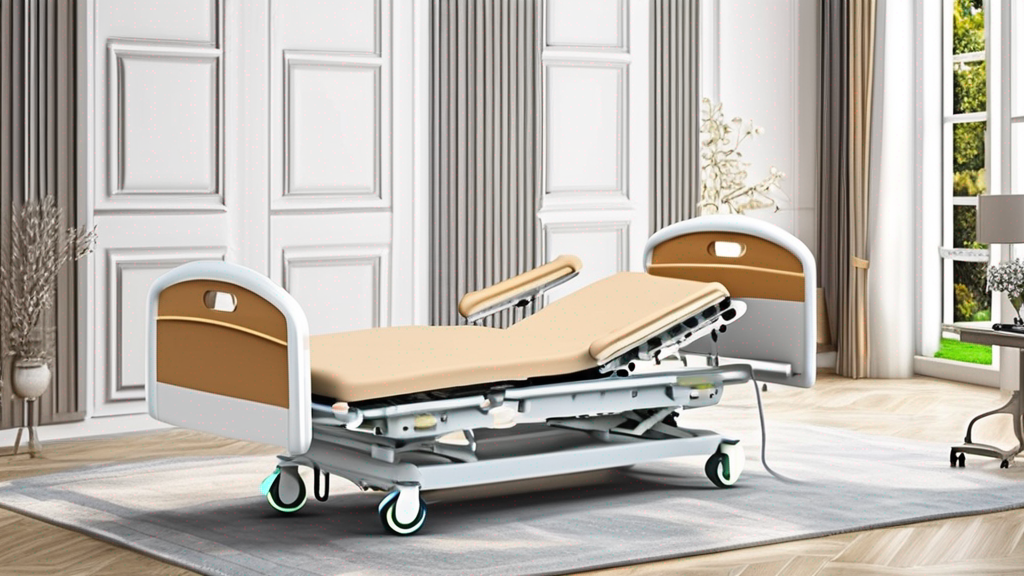What is a homecare beds?
When considering the purchase of a homecare bed, several critical factors come into play. These factors include the type of bed, its price, the advantages and disadvantages it offers, its key features, specifications, and the scenarios in which it is most beneficial. Below, we provide a comprehensive analysis of these aspects, using a specific model as an example, which weighs 99 lbs and has dimensions of 76.8 × 37.8 × 19.3 inches.
Types
Homecare beds are available in various forms to cater to different medical and comfort needs. The main types include:
Manual Beds: Operated with hand cranks, requiring manual effort for adjustments.
Semi-Electric Beds: Combine manual and electric controls for ease of use.
Fully Electric Beds: Feature complete electric operation for all adjustments, offering maximum convenience.
Specialty Beds: Designed for specific needs, such as bariatric patients or those requiring ultra-low positions to prevent falls.
Price
The cost of homecare beds varies significantly based on the type, features, and brand. Manual beds are the most affordable, semi-electric beds offer a middle ground, and fully electric beds, due to their enhanced functionality, command higher prices. Specialty beds, given their tailored features, can be more expensive. Prices range from a few hundred dollars to several thousand, depending on these factors.
Advantages and Disadvantages
Advantages:
Versatility: Adjustable features cater to various medical conditions and comfort needs.
Safety: Enhanced with side rails and, in some cases, emergency lowering capabilities.
Comfort: Designed for long-term use, offering greater comfort than standard beds.
Disadvantages:
Cost: Higher-end models can be a significant investment.
Maintenance: Electric and semi-electric beds require regular maintenance.
Space Requirements: Generally, require more space than regular beds due to their functionality.
Key Features
Adjustability: Head, foot, and height adjustments to cater to medical and comfort needs.
Safety Rails: To prevent falls and assist in mobility.
Ease of Use: Remote controls for easy operation (in electric models).
Durability and Design: Built to withstand prolonged use with designs that can fit into home environments.
Specifications
Weight: 99 lbs, indicating a sturdy build that can support patients securely.
Dimensions: 76.8 × 37.8 × 19.3 inches, a size that accommodates most users comfortably while fitting into typical home spaces.
Application
Homecare beds are ideal for:
Post-operative Recovery: Facilitating recovery by allowing for adjustable positioning.
Chronic Condition Management: Assisting those with long-term medical conditions requiring bed rest or specific positions.
Elderly Care: Providing comfort and safety for seniors with mobility or health issues.
Palliative Care: Ensuring comfort for individuals in end-of-life care.
How Homecare Beds Differ from Hospital Beds
When distinguishing between homecare beds and hospital beds, it’s essential to understand that despite serving similar purposes—improving patient care—they are designed for fundamentally different environments and have unique features tailored to their respective settings. Here’s a detailed comparison highlighting the differences:
Environment and Aesthetics
Homecare Beds: Designed for residential use, these beds often feature aesthetics that blend into the home environment. Manufacturers may offer designs with wood grain finishes or in colors that complement home decor to maintain a comfortable, non-clinical atmosphere.
Hospital Beds: Built for medical facilities, hospital beds prioritize functionality and durability. Their design is more clinical, with a focus on metal constructions and easy-to-clean surfaces to meet the hygiene standards of hospital settings.
Functionality and Features
Homecare Beds: Offer adjustable features aimed at providing comfort and supporting the care needs of the user in a home setting. These may include electric or manual adjustments for height, head, and foot positions. The range of adjustability might be less extensive than hospital beds, focusing on basic needs.
Hospital Beds: Equipped with a wider range of adjustability and positioning features, including Trendelenburg, reverse Trendelenburg, and various height adjustments, to accommodate medical treatments and emergency situations. They often come with advanced technical features like integrated scales and bed-exit alarms for comprehensive patient monitoring.
Safety and Comfort
Homecare Beds: Designed with long-term use in mind, emphasizing patient comfort for extended periods. Safety features such as side rails are common, but might not be as advanced as those found in hospital beds.
Hospital Beds: Include more sophisticated safety features tailored to the hospital environment, such as centralized locking systems and alarms. While also designed for comfort, the focus is on versatility to cater to a wide range of patients and medical conditions.
Durability and Maintenance
Homecare Beds: Built for durability in a home setting, these beds are designed for stability and long-term use but might not withstand the rigorous use seen in hospitals. Maintenance requirements are generally lower.
Hospital Beds: Engineered for high durability and frequent, intensive use. They come with features for easy mobility and cleaning, essential in a hospital setting. Maintenance is more complex due to the advanced functionalities.


